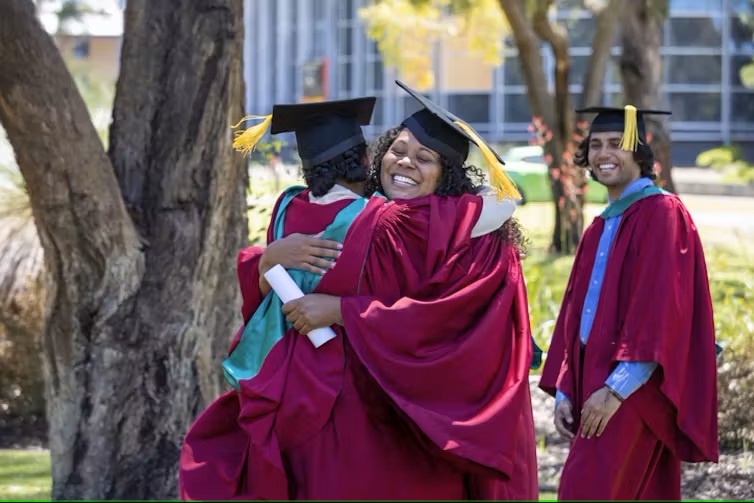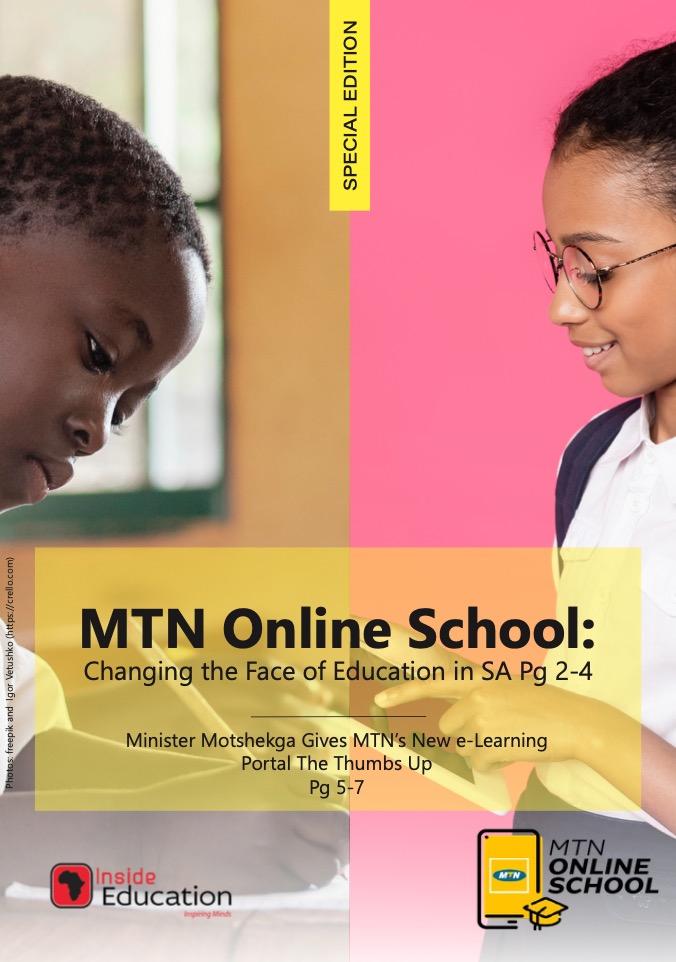Tracy Woodroffe and Khushi Chauhan
Australia has a nationwide teacher shortage. But there is a particular shortage of Aboriginal teachers. This is very worrying because we know Aboriginal teachers are desperately needed to boost learning and school outcomes for Aboriginal students.
Not only do they bring vital cultural knowledge to schools, it also means Aboriginal students are represented by those who educate them. Aboriginal teachers can use Indigenous knowledge in the classroom and build effective student-teacher relationships which are vital for learning.
To boost the overall teaching workforce in late 2023, the federal government launched a campaign to “Be That Teacher”. But we need more specific measures, designed to resonate with Aboriginal students and communities.
In a new, ongoing project, we are talking to Aboriginal high school students and teachers to understand how we can encourage more Aboriginal people to become teachers in the Northern Territory.
What are the current figures?
As of 2023, 39.3% of school students in the NT were Aboriginal and Torres Strait Islander, this is the highest proportion of any state or territory. Nationally, Aboriginal students account for 6.5% of all school students.
As of 2020, there were 260 registered Aboriginal and Torres Strait Islander teachers in the NT. This includes the public, private and Catholic system and represents only 4.6% of the teaching workforce.
As of June 2024, there were just 163 Aboriginal teachers, senior teachers and principals in the public system, according to the NT Department of Education.
While there are existing initiatives to encourage Aboriginal people to become teachers, such as the Remote Aboriginal Teacher Education program, clearly more can be done to increase teacher numbers.
Our project
In an ongoing project, in collaboration with the NT Department of Education, we are talking to students and teachers to ask:
how can Aboriginal people encourage and inspire each other to become teachers?
So far, we have surveyed 23 Aboriginal students and ten Aboriginal teachers across government, independent and Catholic schools. Students are in the final years of schooling and at least 16-years-old.
Do you want to be a teacher?
When asked if students would like to be a teacher when they left school, most students we surveyed responded negatively.
As one student said, “school environments are mentally damaging”. They added the best way to encourage young people to teach would be to “put them in a school that actually accepts them”.
Some of the main reasons students gave for not being interested in teaching were having other career plans, not being interested in school and their teachers’ attitudes to the profession.
Some said their teachers “don’t look enthusiastic about their job” and “always complain about it”. While it was not specified if their teachers are Aboriginal or non-Aboriginal, we know statistically, the vast majority of teachers in the NT are non-Aboriginal.
More information
Students are also telling us they want more information about what it is like to be teacher and the practicalities of the profession. As one student said, they want to be shown “how to be a teacher”.
Another respondent told us:
Sit and talk to them and ask if they are interested in becoming a teacher by explaining the benefits of helping young people.
Role models can help
A strong theme to emerge so far is the importance of role models. Students said their teachers could help them consider becoming a teacher by the way they do their jobs. This was particularly so if they portrayed the profession as one focussed on student success and passion.
One student told us students could be attracted to the profession if they were told about how teachers helped “the next generation [to] follow in elders’ footsteps”.
Students also said they needed encouragement. As one respondent told us, they are worried about being treated badly by students.
Teachers’ own experiences matter
Aboriginal teachers also emphasised the importance of role models and personal experience. They told us their experience at school, whether as a student or later working in supporting roles, was a key reason behind deciding to teach. As one teacher said:
I loved school. I was really lucky enough that I had a school and teachers that were engaging and really lovely people.
But another was also inspired by negative experiences growing up:
I wanted to be a better teacher than the ones I’d had.
They stressed how passion was integral to their work and helping students to learn. They also talked of the importance of culture – something that could be emphasised with potential new recruits. As one teacher told us:
[I am] putting my own perspective on things. Embedding Indigenous content and a different pedagogical [teaching] approach.
Another teacher told us their work also had a simple purpose: “to combat racism”.
What now?
Our research is showing the need for more accessible information for Aboriginal students on how they get into a teaching career. According to students and teachers alike there is also a need for role models to encourage Aboriginal students to take up teaching.
We will keep surveying students and teachers this year and translate our findings into materials and information for universities and schools by the end of 2024.
Tracy Woodroffe
2024 ACSES First Nations Fellow, Senior Lecturer in Indigenous Knowledges, Charles Darwin University
Khushi Chauhan
Research Associate, PhD Candidate, Charles Darwin University
This article talks primarily about Aboriginal people. Some of the data sources we accessed describe “Aboriginal and Torres Strait Islander” statistics, which is why different terms have been used.
The story was first published in The Conversation.







